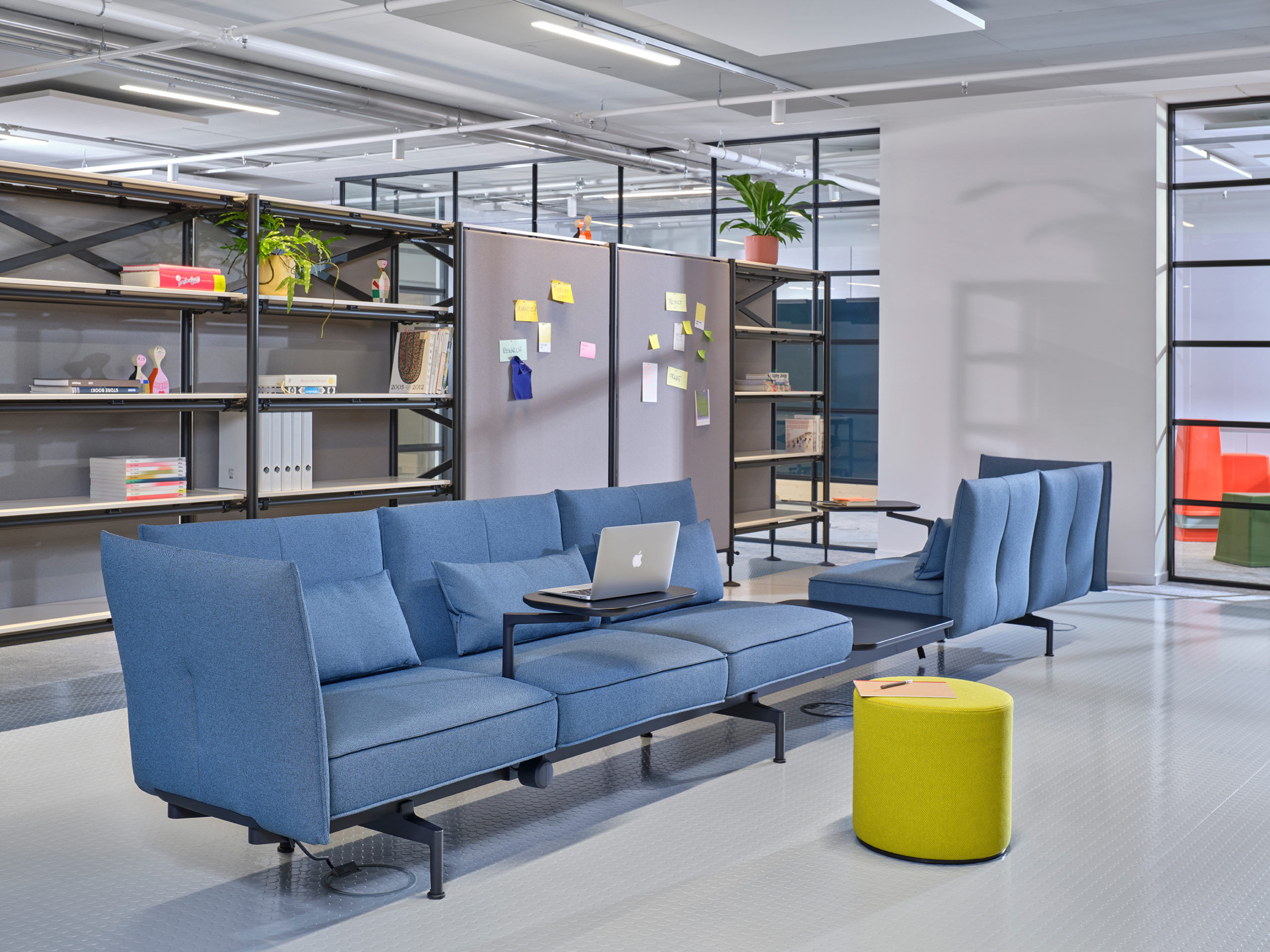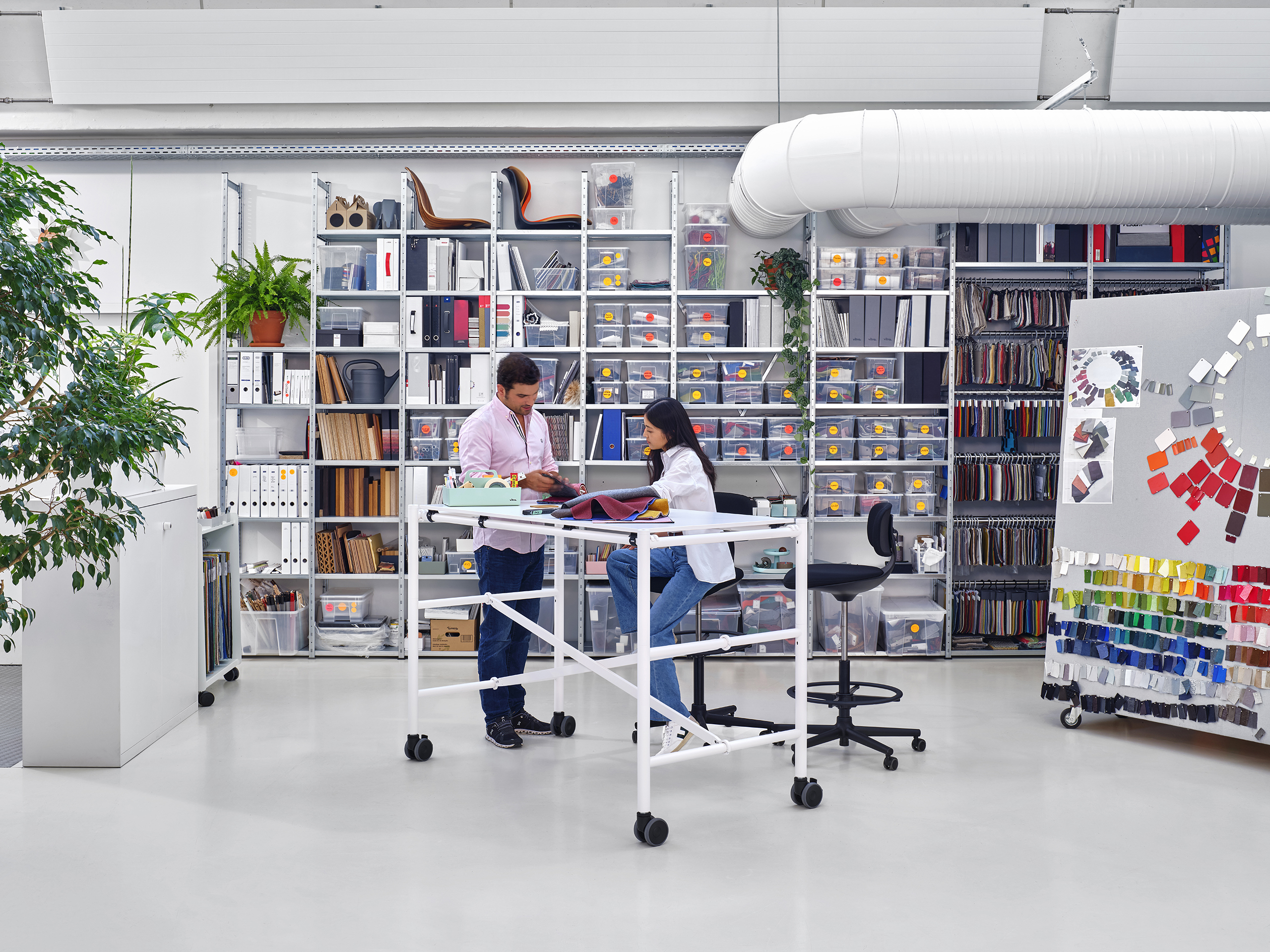It has been over two years since the pandemic began and we were forced to hole up at home waiting for the “all clear.” While the definition of what marks the beginning of post-pandemic life has become more and more ambiguous, so too has the concept of the contemporary workplace. The quick adoption of digital technologies proved to many companies and employees that physical proximity wasn’t essential to the success of their businesses. Employees were happy to axe their commutes and grew to enjoy the flexibility of working from a locale of their choosing, and many companies benefitted financially by discontinuing expensive office leases. On the flip side, some missed the workplace camaraderie and clear boundaries between work and home. These radical shifts in work left employees and firms wondering what comes next.

As a recognized leader in the world of commercial interiors, Swiss furniture manufacturer Vitra is closely observing these shifting workplace trends. In 2021, the company launched Vitra Sessions, a video series that examines the effects of the pandemic on our work environments. The firm poured significant R&D spending into these explorations, designing and building entire office interiors and workspaces to showcase its findings.
“Dynamic Spaces,” the most recent episode of Vitra Sessions, finds that the best solution to entice employees back to the office is a hybrid work model with office space that falls somewhere between two of Vitra’s earlier concepts: Dancing Office and Club Office. Popularized as a response to the immediate impacts of the early pandemic, Dancing Wall, the main component of the Dancing Office, is a functional and adaptable mobile partition that was an excellent solution for the then-new concept of social distancing. The Club Office, which Vitra debuted at its headquarters in Switzerland in 2021, came later. It incorporates a mix of public, semi-public, and private spaces that can accommodate an array of interactions while maintaining a sense of community.

This combination of adaptability and variety is what Vitra describes as “the future of shared spaces.” To account for these shifts, the company designed Comma, a product line consisting of six elements that can be configured and reconfigured into an endless mix of shelving, desks, storage spaces, and more. Comma’s lightweight base and top frames, horizontal and diagonal beams, and shelves and screens can be quickly assembled by one or two people without tools.

“The last two years have shown how important it is to be able to respond to new situations with agile office environments,” Vitra Chief Design Officer Christian Grosen said. “This is what prompted us to develop Comma, inspired by the robust simplicity of scaffolding, which is sturdy and stable and can be adapted to different requirements with the same few basic elements.” Suitable for traditional offices, schools, healthcare environments, and more, Comma is set to provide the flexibility and spacing needed to realize our ideal post-COVID commercial interiors.
